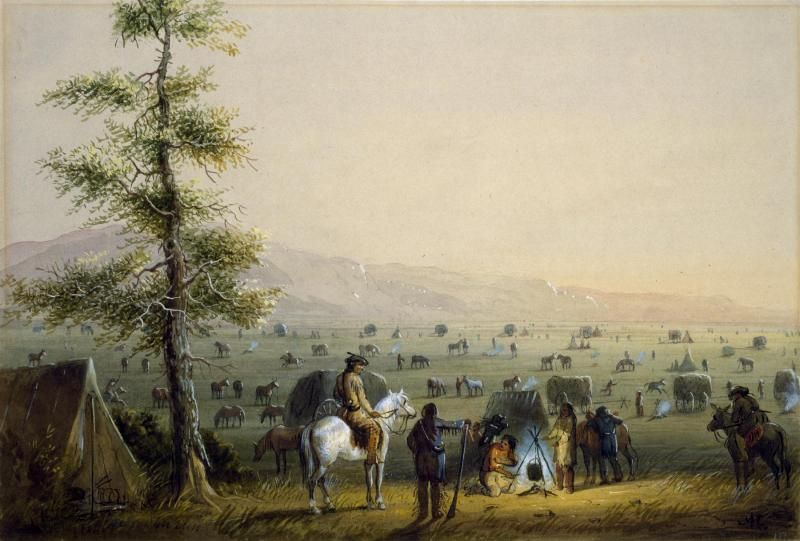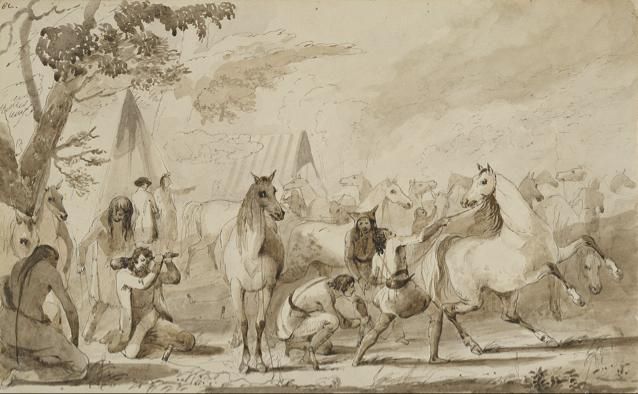Regarding Baker tents specificly, the tentsmiths website has a little bit to say about them.
http://tentsmiths.com/period-tents-baker-tents.html
Regarding what a Mountian Man camp looked like, we dont have to guess, descriptions of actual people who where there survive.
"Up to this period, we encamped without order, helter-skelter, just as it happened, allowing our horses to run loose night and day; but now, when we halted for the night, our camp assumed a somewhat martial appearance. The order of its arrangement was this, - a space of fifty yards square was marked out, one side of which was always along the brink of some stream. Four of our tents occupied the corners, and of the remaining four, one was placed in the middle of each side. The intervening spaces between the tents were barricaded by a breast”‘work formed of our baggage and horse furniture. The space within the square, was dotted with the iron heads of nearly two hundred hard wood pins, each one foot in length, and one and three”‘fourths inches in diameter, drove into the ground, to which our horses and mules were fastened. Each man was provided with a wooden mallet to drive the pins with, and when, just before sunset, all were put into requisition, such a din as they created, would be a caution to Paganini. Immediately after sundown, the words "catch up," resounded through camp, all hands flew to the horses, and all was noise and bustle for some minutes. Forty odd of us 'cordelling' our stubborn mules, - who the more you want them to go, the more they won't - into camp, with oaths and curses, not only loud, but deep - it was wicked, but, poor fellows they couldn't help it! - might have been seen, if one could for laughter have kept his eyes open, upon any such occasion. A few moments and all was quiet again, horses and mules securely fastened to their respective pickets, and the men at their tents, seated around kettles of boiled pork and corn, with pans, spoons, and grinders in motion. Keen hunger made us relish the repast, which else the very dogs had refused, - however all contented themselves as well as they might with such fare, looking forward with a sort of dreamy delight to the time when rich heaps of fat buffalo meat, should grace and garnish our encampments."
Life in the Rocky mountains, 1830-1835, by Warren Angus Ferris
Tent's really are Tents IMHO








